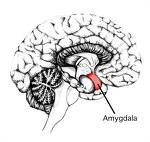Hip-hop shows how deeply the last thirty years of American history have been affected by the politics of abandonment. These inner cities where hip-hop took root were abandoned by government, business, and frankly, the white middle class. What comes out of that is this intense mass longing to create history, to paraphrase Don Delillo, a deep desire to crush invisibility, to make culture that impacts the world and says “we’re here”. That’s hip-hop.
What formal training I have is in ethnic studies, which has always been about recovering voices outside of the mainstream. But more to the point, hip-hop is the voice of the unheard. Hip-hop looks at the world from the street corner up. You could call it the “Straight Outta Compton” approach—to go right back down to the street corner, to the neighborhood, and to understand, say, how urban style develops and evolves on a block. In a global era, what we need to recover is The Local.
This comes from Jeff Chang’s personal history of HipHop. An unbelievably detailed (Does this guy know all these people?) exposition and analysis of hip hop and an American sensibility that begs wider understanding.
http://www.cantstopwontstop.com/qa.cfm
this is like the poor in burlington
the current struggle in establishing voice in this city is epic
the parents of certain schools won’t be denied
the invisible parents lurk behind their doors
the privileged parents move to contain this radical notion that schooling across classes can be good
they move with their usual threats
they will move out of town
they will withdraw their support
they will, and on and on it goes
they assume of course that the rest of us will really care
well, we do care
we care what they think and feel
just like we care what other parents in btv think and feel
of course they will not be denied
and they will go on fighting this demon across their lives
but the voice of equality and opportunity and being heard and stating the fear of oppression and consignment to schooling for failure will not be denied, either
the truce of course needs to happen
is it possible to sit down and figure out how to do this so we are all winners
spike lee’s do the right thing ended in a paroxism of violence
no one won
1968
2008
forty years later
do we dare to have a different outcome?
why can’t we get beyond personal fear and self interest
just this one time
what kind of organizing will it take to achieve this
who remembers 1968
bobby kennedy
malcomb X
1968 is a mythical moment, the year in which students around the world are protesting—from Columbia University and San Francisco State to Paris to Mexico City—the year that Martin Luther King, Jr. and Bobby Kennedy are assassinated, the year that Tommy Smith and John Carlos raise the black fist at the Olympics, the year that riots break out in Chicago, Washington D.C., Cincinnati. The anti-war movement and the black power movement are at their peak. 1968 is when the baby boomer/civil rights generation come of age.
you/we are the baby boomers
what will be your legacy?
shutting down the very freedoms your mothers and fathers died for?
who will step forward?
who will say yes to tomorrow
and no to the politics of singular privilege
let us all be privileged
and walk this journey together
burlington united will be so much more than
burlington divided
SHALL we overcome?
shall we OVERCOME?
shall WE overcome?
parents need to show compassion as never before
politicians need to show political courage
we all need the will power to see this through
Such an interesting city.
In many ways, the north and south of Burlington – because of its stretched out nature along the lake – are “the suburbs.” City center are the ten or so blocks on the east west dividing line between the new north end and the south end. Geography plays a huge role in this city’s politics. Suburbs. Center City. Old North End. Think about these in light of the economic discussions now happening and Wimsatt and Chang’s commentaries.
Chang quotes WIlliam Wimsatt in Bomb The Suburbs.
The suburbs is more than just an unfortunate geographical location (Wimsattt), it is an unfortunate state-of-mind. It’s the American state-of-mind, founded on fear, conformity, shallowness of character and dullness of imagination. “I say bomb the suburbs because the suburbs have been bombing us for at least the last forty years. They have waged an economic, political and cultural war on ‘life in the city’ (WImsatt wrote). Bomb the Suburbs means let’s celebrate the city. Let’s celebrate the ghetto and the few people who aren’t running away from it.
[I would add “lack of recognition” to the above list. People have worked hard making this a great city for their kids. And they (the middle class and up) have made this a terrific city to live in, for their kids. We just have to realize all the kids in this city should be “our kids.” Right now we deliberately and blindly limit educational opportunity and outcome for the poorest kids of our city, the ones living in the core.]
And then Change goes on to write Here was the idea of the “urban” addressed with a thorough-going optimism. Hip-hop separated from marketing imperatives was still something his generation could control and define. Suburbanites could unite with ghetto-dwellers, Whites could learn to respect Blackness, not merely consume it. Wimsatt, the militant dreamer, wanted a world that was not just polycultural, but postwhite (p.422).
Is there a new idea of class and relationship in this postwhite idea? Can we grow it here?
 has since published the book she was finishing at the time –
has since published the book she was finishing at the time – 


